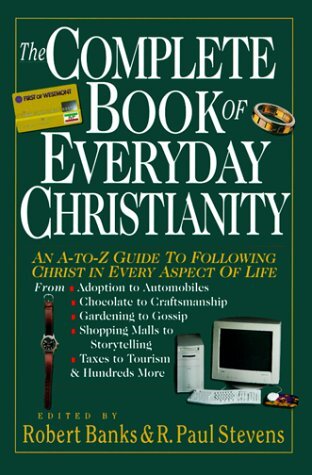Inner City
Book / Produced by partner of TOW
Widely used and rarely defined, the term inner city seems to have come into common usage in the 1960s. Although in the past inner city was sometimes interchangeable with central city, the two terms now have quite different connotations. Both refer to the geographic core of a city, with inner city connoting not only geography but dense population, physical deterioration of buildings, poverty and poor access to services.
More recently, inner city has become a label for any area of a city with certain types of social ills, including high crime rates, poor schools and high dropout rates, drug sales and drug use, and so on. In Los Angeles, the south-central area is referred to as inner city; it is a residential area and not near the core or central city, yet the fact that it is inner city would not be questioned. Thus an inner-city area may not even be near the city center. Rather than expressing location, the term now connotes characteristics related to certain social problems regardless of location. Even smaller towns in rural areas that exhibit high crime rates, gangs and so on are said to be developing “inner-city problems.”
These strong connotations developed through usage have led to the term being used as a symbol of some of the social ills and evils feared by society as a whole. “Inner city” as a symbol is laden with fear. The function of the symbol is to distance a person from these fears. After the Rodney King disturbances in Los Angeles in 1992, the deepest fears were not among those who lived in the inner city where the fires had burned but among those who lived in surrounding areas. The fear stemmed from the possibility that the problems usually contained in certain areas might be spreading to “safer” areas. In reality the different parts of a city are not separate from each other. They are interrelated parts of an organic system, much like the human body. One part may show an illness, but the whole body is affected. In fact the cause of the illness may lie elsewhere.
The discussion of inner city is tied to a related discussion within the discipline of urban sociology regarding the definition of urban. Historically urban referred to a place. However, it is becoming increasingly clear that urban is not so much a place as it is social processes rooted in but not contained within a city.
To be understood, these processes must be seen in their global context. The situation of increasing deterioration of many American inner cities is related to a strong antiurban bias that favors the American dream of a house in the suburbs over life in the city. At one time referred to as “white flight,” this flight crosses racial and ethnic lines and, in fact, is the fleeing of those with economic means, thus leaving inner-city areas stripped of resources. This antiurban bias is not found in many cities of the majority world, where the cities are seen as a place of hope and opportunity. There the poor are most often found in squatter settlements that surround the edges of large cities.
» See also: City
» See also: Suburbia
References and Resources
W. G. Flanagan, Contemporary Urban Sociology (Cambridge: Cambridge University Press, 1993); J. J. Palen, The Urban World (New York: McGraw-Hill, 1981).
—Jude Tiesam
Popular Content
Popular Content
The Complete Book of Everyday Christianity: An A-Z Guide to Following Christ in Every Aspect of Life

The authors Robert Banks and R. Paul Stevens have partnered with The Theology of Work Project to offer The Complete Book of Everyday Christianity in its entirety here. All rights reserved.
This resource was originally published in 1997, and the text has not been updated.
Table of Contents
- The Complete Book of Everyday Christianity
- Introduction
- Abortion
- Abuse
- Accountability, Relational
- Accountability, Workplace
- Addiction
- Adolescence
- Adornment
- Advertising
- Affirming
- Aging
- Allowances
- Ambition
- Anniversaries
- Anxiety
- Architecture, Urban
- Art
- Authority, Church
- Automobile
- Backpacking
- Baptism
- Beauty
- Birth
- Birthdays
- Blessing
- Blessing, Family
- Body
- Boredom
- Breast-Feeding
- Business Ethics
- Calling/Vocation
- Camping
- Career
- Chocolate
- Chores
- Christian Education
- Church
- Church as Family
- Church Buildings
- Church Conflict
- Church Discipline
- Church in the Home
- Church Renewal
- Church, Small
- Church Structures
- Circumcision
- Citizenship
- City
- Civil Disobedience
- Civility
- Clergy
- Climate Change
- Clubs
- Coffee Drinking
- Cohabiting
- Comics
- Committees
- Communion
- Community
- Community, Rural
- Commuting
- Competency
- Competition
- Compromise
- Computers
- Computer Games
- Conception
- Conflict Resolution
- Conflict, Workplace
- Confronting
- Conscience
- Consumerism
- Contraception
- Contracts
- Conversation
- Counseling, Lay
- Craftsmanship
- Creation
- Credit
- Credit Card
- Crime
- Crowds
- Culture
- Dating
- Daydreaming
- Death
- Debt
- Denominations
- Depression
- Discipleship
- Discrimination, Workplace
- Divorce
- Dreaming
- Dress Code, Workplace
- Drivenness
- Drugs
- Eating
- Ecology
- Economic Crisis (Written 2011)
- Education
- Empty Nesting
- Entertainment
- Equipping
- Ethnocentrism
- Euthanasia
- Evangelism
- Examinations
- Failure
- Fairy Tales
- Faith Development
- Family
- Family Communication
- Family Goals
- Family History
- Family Problems
- Family Systems
- Family Values
- Farewell
- Farming
- Fellowship
- Femininity
- Fences
- Financial Support
- Firing
- Forgiveness
- Freedom
- Friendship
- Games
- Gardening
- Gift-Giving
- Global Village
- Godparenting
- Greeting
- Grieving
- Guidance
- Habits
- Hate
- Healing
- Health
- Hobbies and Crafts
- Home
- Homemaking
- Home Video
- Homework
- Homosexuality
- Hospitality
- Humor
- Imagination
- Immigration
- Individual
- Information Superhighway
- Inner City
- Insurance
- Integrity
- Internet (Written 2011)
- Investment
- Justice
- Laity
- Laughter
- Law
- Law Enforcement
- Leadership
- Leadership, Church
- Leisure
- Letter Writing
- Life Stages
- Listening
- Lobbying
- Love
- Loyalty, Workplace
- Management
- Marriage
- Masculinity (Written 2011)
- Mass Media
- Masturbation
- Meal Preparation
- Megachurch
- Membership, Church
- Menopause
- Menstruation
- Ministry
- Miscarriage
- Mission
- Missions
- Mobility
- Money
- Movies
- Multiculturalism
- Music
- Music, Christian
- Nationalism
- Need
- Negotiating
- Neighborhood
- Networking
- New Reproductive Technology
- Newspapers
- Noise
- Nondenominational
- Office Politics
- Organization
- Organizational Culture and Change
- Organizational Values
- Ownership
- Parachurch Organizations
- Parenting
- Part-Time Employment
- Partying
- Pastoral Care
- Pets
- Photography
- Planning
- Play
- Pleasure
- Political Parties, Joining
- Politics
- Pollution
- Poverty
- Power
- Power, Workplace
- Prayer, Corporate
- Preaching
- Pregnancy
- Principalities and Powers
- Privacy
- Professions
- Profit
- Promising
- Promotion
- Public Transportation
- Quilting
- Racism
- Radio Listening
- Reading
- Reasoning
- Recreation
- Rest
- Restorative Justice (Written 2011)
- Retirement
- Rights
- Sabbath
- Sacraments
- Self-Esteem
- Service, Workplace
- Sexuality
- Shame (Written 2011)
- Shiftwork
- Shopping
- Shopping Malls
- Sickness
- Simpler Lifestyle
- Singleness
- Sleeping
- Small Groups
- Small Towns
- Social Action
- Social Media (Written 2011)
- Society
- Soul
- Speaking
- Spiritual Conflict
- Spiritual Disciplines
- Spiritual Formation
- Spiritual Gifts
- Spiritual Growth
Donate
Topics
Copyright
Image by Markus Spiske . Used with Permission.
Copyright 2024 by Robert Banks and R. Paul Stevens.
Previous editions published by NavPress InterVarsity Press (IVP) (1997), Graceworks (2011, 2018).
All rights reserved.
All Scripture quotations, unless otherwise indicated, are taken from the Holy Bible, New International Version. NIV Copyright 1984 by International Bible Society. Used by permission of Zondervan Publishing House. All rights reserved.




